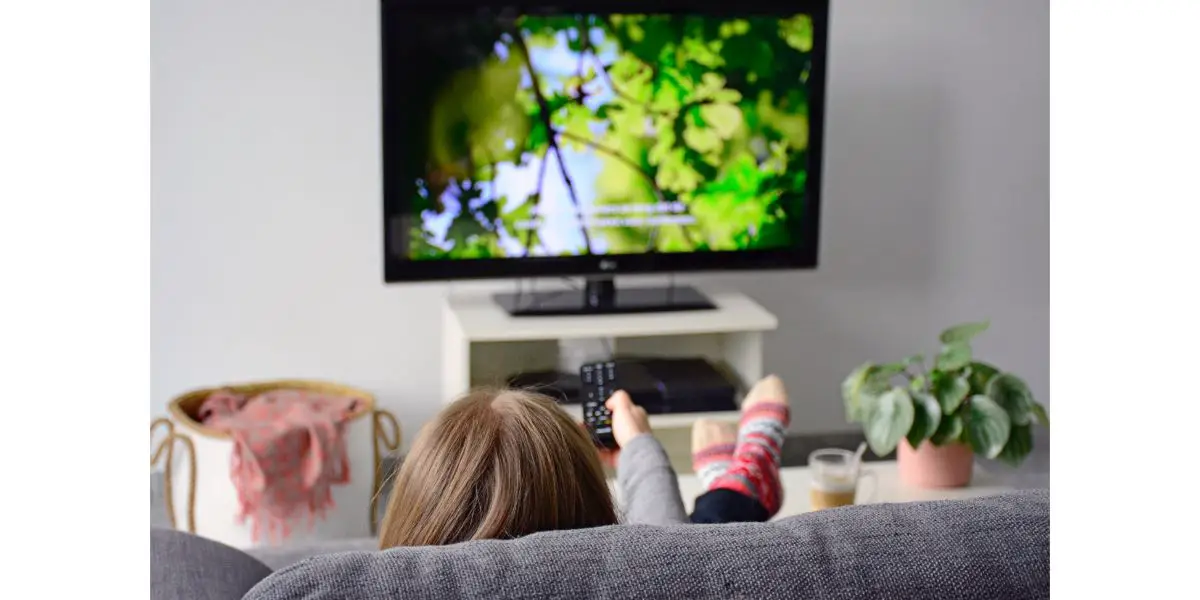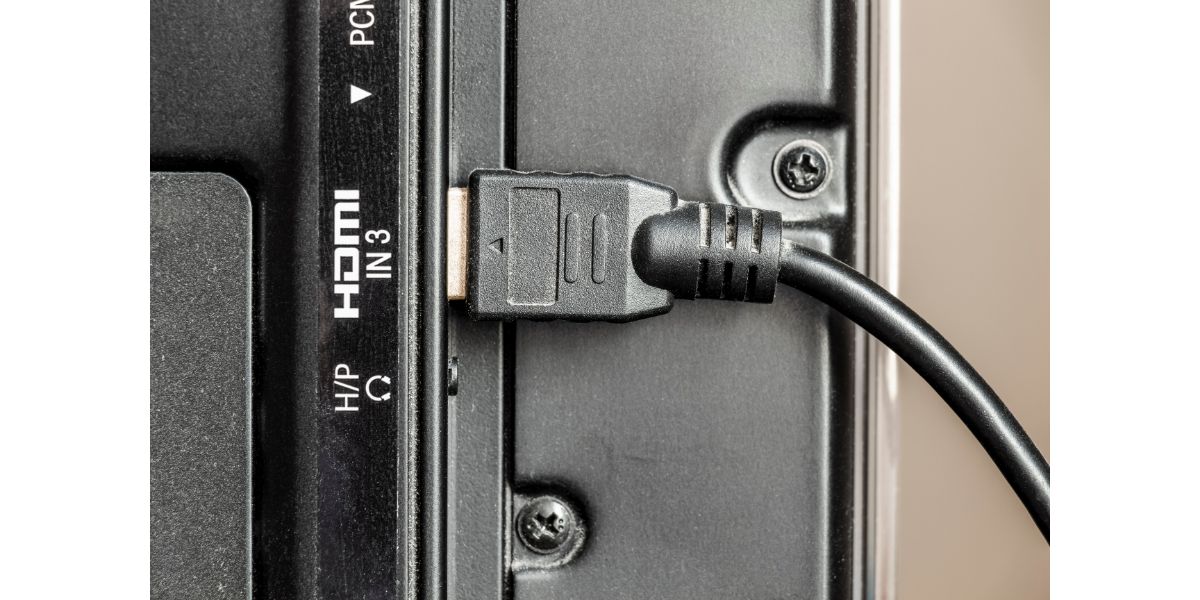Disclaimer: This post may contain affiliate links, meaning we get a small commission if you make a purchase through our links, at no cost to you. For more information, please visit our Disclaimer Page.
More than half of Americans watch at least one hour of TV – and up to four! – every day. If your TV’s sound is suddenly on the fritz but isn’t muted, we have 10 fixes to solve it and get you back on your viewing schedule.
Table of Contents
What Causes a TV with No Sound?
A TV with no sound is usually the product of an incorrect volume level, faulty connections, an app or channel problem, or an internal issue.
Volume Level
We’re sure you’ve bumped the volume on your TV up to the maximum, but what about other devices? If you use a separate cable box for your channels, for example, you may have a second remote that controls the volume for playback from that device. Make sure the volume is up on all devices and remotes, including your TV.
Faulty Connections
Connection issues could happen through cables, Bluetooth, Wi-Fi, or satellite.
Faulty or loose wires could cause a sound issue on your TV. Over time, the ports on your TV will also wear down and may need to be replaced. Wires can be chewed through by pets, get twisted during cleaning, or accumulate dust and grime that enters the port and causes connection issues.
Another type of connection issue is Bluetooth and Wi-Fi. If you’re streaming a series or using Bluetooth to project your image, an unstable connection could cause the sound to lag or stop altogether. Make sure your Bluetooth devices are in the same room as your TV and unobstructed.
Finally, if you’re using a satellite to broadcast local channels, you could also get connectivity issues if there’s an issue with the broadcasting channel or if something is blocking the satellite.
App/Channel Issue
Sometimes the sound on a TV may go out altogether because of a problem with a specific app or channel. That app may be outdated, incompatible with your smart TV’s latest updates, or contain a bug.
Internal Issue
Internal issues are also big reasons that speakers and audio output stop working. Whether your TV’s firmware is outdated, the internal components were damaged somehow, or another internal issue occurred, this could easily stop your audio and video in their tracks.
10 Potential Fixes For Tvs with no Sound
Sift through these 10 fixes one at a time until you get the sound back on your big screen.
Before you do so, make sure the volume on your other devices and TV are all turned on – sometimes, the TV’s volume is maxed out but the audio source’s volume is at a minimum.
1. Restart the TV and Devices
The old-school response to any faulty happening is to restart the device.
First, restart your TV by turning it off and on. If this doesn’t change anything, turn off the TV, then unplug it. Next, hold the power button on the TV itself for at least ten seconds. This will discharge residual power.
After that, plug the TV back in and turn it on using the remote or the TV power button itself.
If you were using your TV with an external device, be it speakers, a cable box, a router, a laptop, or anything else, turn off the external devices and restart them alongside the TV.
2. Switch Channels/Streaming Options
If your sound issue began while you were on channel six or streaming a Netflix series, the issue may lie in the video source.
Try switching channels, turning the TV off and on again beforehand. Alternatively, if you were using an app switch to a different one or to cable to see if the sound reappears.
If it does, you’ll know the issue is within the channel or app. You can try troubleshooting the source or immediately uninstalling and reinstalling the app. Know that the latter will delete your preferences and any saved log-in information.
3. Check Audio Configuration
If you use external speakers, Bluetooth devices, or other devices connected to your TV you need to make sure they aren’t the source of the problem.
Head to your TV’s audio settings to see which speakers or audio output the TV is connected to. Most TVs will have a Display ; Sound or Audio option under the Settings menu. Select Speakers and make sure the audio configuration is accurate.
Your TV may have the following audio modes available:
- Sound mode: allows for customization for your audio depending on the source of the sound. Set it to Standard.
- Surround sound: Newer TVs may have this option to adjust the sound and balance on each speaker. This should not affect your TV’s audio output.
- Volume control: Make sure the volume is up.
- Audio delay: This feature aligns the audio with the picture if it was off. You can try out this setting but it shouldn’t affect the audio output as a whole.
- Equalizer: This feature adjusts and customizes the frequencies. You can leave this on its original settings.
- Audio output: This is where you’ll select the TV’s audio output device – usually, the TV’s built-in speakers
4. Check Bluetooth Connections
If you’re using a smart TV, turn off your Bluetooth connection as you’re troubleshooting your audio issues. Smart TVs that have been paired with headphones, phones, or other external devices in the past may reconnect on their own.
This means your sound will be working – just through one of the Bluetooth devices you don’t have on hand.
To deactivate Bluetooth, go to Home and Settings/Options. Select Bluetooth Devices/Settings and turn the option off. If you have trouble finding this feature, use your TV brand’s manual or online guide.
Some smart TVs may not have Bluetooth connections.
5. Inspect and Re-plug all Cables
A faulty or loose cable could stop any electronic device from working normally. Turn your TV and all connected devices off. Then, unplug each cable connected to your TV on both ends.
Inspect the cables for cuts, twists, frays, or broken ends. Make sure you also check out the ports on the back of your TV for any parts that look damaged or dirty.
Never clean ports or cables with liquid cleaners – a dry rag and compressed air will do just fine.
Plug all of the cables back in and turn your TV and devices back on to check the sound.
6. Switch HDMI Ports
Most TVs will have one if not two HDMI ports. Over time, these ports wear out and cause problems with the HDMI connection.
If you’re using an HDMI connection, first try switching the cable to the second HDMI port. Adjust the input settings on your TV to match the port and see if the sound works.
If the sound is still off, switch out the HDMI cable for a new one if possible. If you don’t have a second cable, use the HDMI cable on another device to make sure it works. If the cable works yet there is no sound on both ports, it’s likely not an HDMI issue.
7. Test Out External Speakers
If you have a set of external speakers, be it Bluetooth or connected by cable, try connecting them to your TV to see if the sound could be projected this way.
Connecting speakers to your TV depends on the brand and model. Some TVs have a headphone jack or other optical output on the back of the TV. Use the appropriate cable to connect your speakers or use Bluetooth settings to connect wirelessly.
Turn on both your TV and speakers. You may need to enable the new speakers under Audio Settings. Test out a channel or app to see if the sound works this way. If so, you have confirmed it is an error within the TV’s internal speakers.
8. Check and Install Updates
Most smart TVs will update on their own, but now and again a system error could leave your TV with outdated firmware, causing audio or visual problems. Here are the steps for checking for updates on a Samsung, Sony, and LG smart TV.
- Samsung: Press Home on the remote, select Settings (a gear icon), and then Support. Select Software Update and Update Now. If an update is available, follow the prompts to install it.
- Sony: Press Home on the remote, select Settings (a gear icon), and then System Software Update. Choose Check for System Software Update and, if one is available, follow the instructions to install it.
- LG: Press Home on the remote, select Settings (a gear icon), and then General. Choose About This TV and Check for Updates. If one is available, follow the prompts.
If your TV is from another brand, you can find a set of instructions online.
9. Reset the TV
If you’re still struggling to recuperate your TV’s sound by this step, it’s time for a hard reset. This will return your TV to factory settings, meaning you’ll lose any personalized settings, downloaded apps, and saved log-ins. Luckily, you’ll be able to reinstall any apps or features once you reset the TV.
Most TVs can be reset by finding the Reset or Factory Reset option under Settings. You’ll follow the on-screen instructions and wait for the reset to complete.
10. Contact Tech Repair
If a hard reset still hasn’t brought back your TV’s sound, it could be an internal issue that needs professional attention. For those who still have their TV under warranty, reach out to the warranty provider for assistance.
Others may call their TV brand’s customer service lines. As a final option, you can always reach out to your local tech repair shop for advice and assistance.
Final Thoughts
The best way to troubleshoot a TV with no sound is by restarting the devices, toggling with the audio input and configuration, inspecting and changing out hardware, installing updates, and then resetting the TV itself.
These options usually resolve audio issues, but for any remaining problems, you can always reach out to customer service or tech support in your area.



